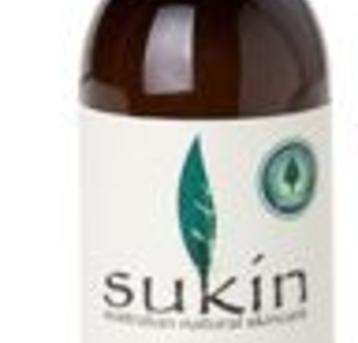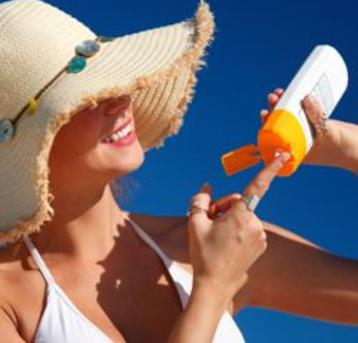As the weather gets warmer and we can finally say goodbye to tights for another year, it can be a little disappointing when the skin beneath is nothing like the glowy, tanned stems you imagined poking out of your denim shorts. Not to mention the tricky business of sun exposure, which, according to dermatologist Dr Cathy Reid, is our number-one threat in the warmer months.
This threat is what has lead to one of the biggest areas of development when it comes to summer skincare – the inclusion of SPF in more and more face products. Foundations are evolving into offering more than just coverage, with many becoming moisturisers, anti-agers and sun protectants all in one. One of the other biggest areas of development is most certainly the boom in the fake-tan market, which in recent times has even seen the dawn of an organic tan. Here’s our round up of all the latest technology on the market.
Face care
Ask any dermatologist and they’ll tell you that the sensitive skin on our face requires daily SPF protection. According to Dr Reid, it doesn’t matter which of your face products contains SPF, as long as at least one of them does. Any product that has a rating of 30+ is effective,” she explains. SPF 15 blocks 94 per cent of ultra-violet light, while SPF 30 blocks 97 per cent, so it’s not like you’re getting double the protection, but obviously the higher the rating the better.”
has an SPF of 30+, but is gentle enough to use daily and won’t be too gluggy to sit comfortably beneath make-up. The lightweight formula is fragrance-free and non-comedogenic, so it doesn’t clog pores.
In keeping with the idea of simple skincare, we can’t look past the latest offering from NIVEA Visage – the range of moisturisers. The light moisturising day creams all contain SPF 15 and UVA filters, so skin is protected from daily sun damage. Split into categories for normal & combination skin, combination & oily skin and dry & sensitive skin, each formula contains specific ingredients (such as natural lotus extract and natural almond oil) to cater for the different skin types.
One Australian brand has turned to local ingredients for its moisturising and anti-ageing foundation and sunscreen. Hissyfit’s Saving Face contains extracts of pomegranate and green tea as well as native Australian daisy, Cehami, which has been used for centuries by Aboriginal tribes in Australia and is proven to offer cell renewal and anti-inflammatory properties. It also has an SPF of 30+.
Such is the appeal of SPF ingredients that it seems a brand would be foolish not to include it in their face products. Trilogy recently launched their best-selling with an SPF15 option. The brand says the new-generation, natural SPF shields skin from UVA and UVB rays with a non-whitening and non-nano zinc oxide formulation.
With all the focus on protecting skin from the summer sun, it can be easy to neglect lips, which are just as susceptible to sun damage. contains mango butter, which has high oxidative ability, wound healing and regenerative activity. Lipsaver also features SPF30+ and UVA/UVB protection to shield lips from the harsh summer sun.
Catching on to the SPF phenomenon, more and more brands are including SPF in their face make-up, such as foundation. Bobbi Brown’s new offers broad-spectrum UVA and UVB protection, as well as Vitamin E to protect against free radicals. Revlon’s latest foundation offering, Age Defying with DNA Advantage™ Cream Makeup, on shelves August 1, uses a blend of anti-ageing ingredients and SPF 20 to protect from sun damage and fight visible signs of ageing.
According to Dr Reid, studies show that the problem is that people aren’t applying enough of these sun-protection products to their skin, and you need to ensure overall coverage. Also, if it’s hot and sweaty and you’re touching your face a lot, you need to ensure you reapply throughout the day.”
Body care
When it comes to body care, the best way to keep your skin looking it’s best is to keep it moisturised! Montville Organic Skincare’s Body Butters contain coconut oil, shea nut butter, apricot kernel oil and jojoba oil to nourish skin and leave it firm and supple. "Moisturisers should be applied immediately after your bath or shower as this is when the skin is most receptive," says Dr Reid.
If you think you can tackle that scaly skin by upping your intake of water, you might want to change your game plan. Dr Reid says that while drinking plenty of water in summer is important, it won’t impact on your skin. Unless you’re stranded in the desert, dehydration isn’t going to show up on your skin. Increasing the amount of water in your diet doesn’t increase the moisture levels of skin.” Dr Reid suggests taking evening primrose oil orally to combat dry skin.
Fake tan
During summer, a tan is to skin what a house in the Hamptons is to a New Yorker so it’s no wonder more and more people are turning to fake tan to achieve their bronze. Luckily, Dr Reid has given us her blessing to faux bronze to our hearts’ content, confirming that fake tan isn’t bad for your skin.
Fake-tan technology has increased at light speed, so much so that we’ve seen the creation of Australia’s first certified organic self-tan. Eco Tan’s Invisible Tan is free from all synthetics, including petrochemicals. It also doesn’t contain any dyes and dries instantly, so you can wake up without it looking like an Oompa Loompa-related crime scene. Eco Tan's Invisible tan is available now and retails for $31.95.
Aussie brand Minx Bronzing and Cosmetics also offers tanning products devoid of any harmful chemicals or additives. Their Bronzing Bliss gradual tanner has the added patented hydrating complex Aquaxyl, which intensively hydrates and rejuvenates the skin, as well as AstraCran, a concentrated antioxidant that contains 500 times the protective benefits of Vitamin C.
Most of the changes we’re seeing on the summer skincare market can be traced back to consumers’ increased desire to skin from the harsh Australian sun. No longer is a real tan (and the subsequent leathery skin) appealing to the masses, which explains why so much research has been put into these areas in recent years. With all this technology, it’s a wonder how orange skin still gets a look-in these days (we’re talking to you Giorgio).



